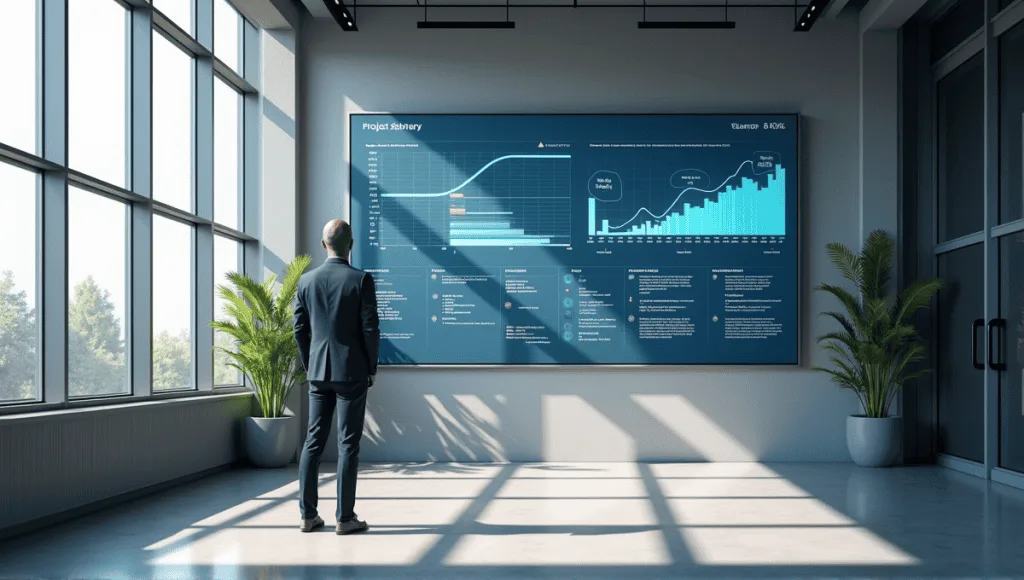The waterfall model is a traditional software development approach, but it has some major drawbacks. These limitations can hinder project success, particularly in today’s fast-paced tech environment. I’ve experienced the inflexibility of rigid phases and testing at the end of the process derailing projects prior to my AI career.
Knowing these drawbacks is important for anyone in software development or project management. So why do they still make a difference today?
Understanding the Waterfall Model in Software Development

The waterfall model is a linear sequential software development methodology. I used this methodology in the early days of my career, and it is defined by a set of phases in a specific sequence.
Here are the sequential phases of the waterfall model:
- Requirements analysis and definition
- Design
- Implementation
- Testing
- Deployment
- Maintenance
The waterfall model was first documented by Dr. Winston W. Royce in a 1970 paper. This methodology originated from the manufacturing and construction industries, where it’s expensive to make changes halfway through a project.
You can still find the waterfall model in use in specific industries today, including:
- Construction
- Manufacturing
- IT infrastructure
- Government projects with heavy regulations
These industries tend to have very clear requirements and virtually no changes throughout the project.
In my experience, the waterfall model is most effective for projects with very clear, stable requirements and a short duration. However, it’s less effective for highly innovative/complex projects or projects with changing requirements. Agile project management offers more flexibility for such projects.
Inflexibility and Resistance to Change in Waterfall Model

The waterfall’s linear sequential phases make it very inflexible. I’ve seen projects fail to accommodate changes to the requirements halfway through the development phase. The model assumes you can gather all requirements upfront, which is rarely the case.
When changes do inevitably happen, it disrupts the whole process. This can result in delayed projects and blown budgets. For example, I once worked on a project where we had to start from the design phase again during the testing phase due to a major change in requirements. It was expensive and time consuming.
Comparing waterfall’s inflexibility to other methodologies looks like this:
- Waterfall: Linear sequential phases that are difficult to change
- Agile: An iterative approach where you can welcome change throughout
- Lean: Focus on waste elimination and changing quickly
- Spiral: A risk-driven model with the potential for multiple iterations
There are countless real-world examples of waterfall’s inflexibility. One major example is the FBI’s Virtual Case File project. After five years and $170 million, it was ultimately abandoned due to changing requirements and the model’s inflexibility.
Late Testing and Quality Assurance Issues

Testing in waterfall occurs late in the development process, which can create major issues. I’ve seen firsthand how delayed bug discovery can negatively impact a project.
Fixing bugs at the end of an application’s development cycle is more expensive and time consuming. You often introduce new bugs when fixing old ones, and subsequently need to retest them. This process adds significant time to the project’s timeline.
Limited time for comprehensive testing is another drawback. When testing is rushed, you miss bugs that users will eventually discover after the app is live. Fixing these bugs is far more expensive than putting in the effort to write comprehensive tests for a feature.
Waterfall testing is essentially the opposite of continuous testing in agile methodologies. Agile is all about frequent, ongoing testing throughout the application’s development. This ensures you catch and fix bugs earlier in the development process when they’re cheaper and faster to fix.
While you can’t change that much about when you do testing in a waterfall framework, you can at least ensure that you have a robust error detection process in place to mitigate some of these issues.
Limited Customer Involvement and Feedback

Waterfall is designed to minimize customer (or stakeholder) interaction throughout the development process. As a result, the final product often doesn’t match what the customer had in mind. I’ve worked on projects where we delivered exactly what the customer asked for, only to have them come back and tell us it was completely useless to them.
Without regular customer touchpoints, any feedback you do get is often too late to easily incorporate. The only options are to do expensive rework or deliver an inferior product.
Agile, customer-centric development approaches are the exact opposite:
- Regular customer demos/feedback
- Iterative development with the ability to pivot
2 . User stories and personas to guide development - Constant checking that the product meets market needs
To make sure your waterfall project doesn’t suffer from this problem, you can:
- Do thorough requirements upfront
- Use prototypes to get early customer feedback
- Schedule periodic customer check-ins
- Convince your customers to implement change orders for any critical feedback
These tactics will help ensure the final product meets the key requirements of the customer. Implementing agile customer management principles can also be beneficial, even within a waterfall framework.
High Risk and Uncertainty in Waterfall Projects

Waterfall projects tend to accumulate risk because integration and testing occur late in the process. I’ve seen how discovering unforeseen problems late in the process can completely derail a project.
Accurately predicting the timeline and budget in a waterfall model is difficult. The sheer length of the development phase makes it impossible to plan for every variable. As a result, most waterfall projects experience budget overages and timeline delays.
The inflexibility of the waterfall model also makes it challenging in today’s fast-paced environment. When most of the testing happens at the end, it’s hard to estimate the timeline and budget accurately. It’s also inflexible, making changes very expensive in terms of both time and money. My least favorite part about the waterfall model is the high amount of risk and uncertainty, and the difficulty of estimating the timeline and budget.
To reduce these risks within the waterfall model:
- Assess risk more thoroughly in each phase.
- Incorporate more contingency timeline and budget.
- Implement more rigorous documentation and change control.
- Use more project management tools for better tracking and forecasting.
These strategies make uncertainty more manageable and reduce overall project risk. Utilizing agile estimation techniques can also help improve accuracy in timeline and budget predictions.
Limited Visibility and Progress Tracking

It’s difficult to track real progress in waterfall projects. I’ve been in situations where progress reports didn’t accurately reflect the state of the project.
The lengthy development phases don’t offer many opportunities to provide stakeholders with meaningful progress reports. As a result, you can find yourself delivering progress reports with little transparency, which causes stakeholders to set expectations that don’t align with the reality of the project. Then, they’re surprised when the project nears completion.
Issues remain hidden until late in the project. Then, it becomes a fire drill to solve the problem.
Agile progress tracking tools are more transparent. They use burndown charts, sprint reviews, and daily standup meetings to ensure everyone clearly knows the state of the project.
By implementing progress tracking tools (like burndown charts) and meeting with stakeholders on a regular basis, you can add some transparency to waterfall projects.
Waterfall Model Limitations in Complex and Innovative Projects

Waterfall struggles with projects that change requirements midway through. I’ve experienced this issue in rapidly evolving tech environments. Its strict framework can inhibit innovation and creativity.
Switching to a new technology halfway through a project is difficult in waterfall. As a result, the solutions may be outdated by the time a project finishes.
Iterative methodologies are more appropriate for more complicated projects:
- Rapid prototyping and iteration
- Constant iteration and feedback
- Willingness to change direction based on new information
- Embracing experimentation and iteration
Many case studies in the software industry discuss these drawbacks. For example, many game development companies no longer use waterfall because it stifles their ability to be creative and iterate. Instead, they often employ agile techniques to foster innovation and adaptability.
Addressing Waterfall Model Limitations

Some companies use hybrid models that combine elements of waterfall and agile to maximize the strengths of each and minimize the weaknesses. I’ve successfully used these hybrid models in some projects.
Making a few adjustments to the traditional waterfall model can make it more flexible. These adjustments might include:
- Adding mini feedback loops inside stages
- Allowing minimal requirements changes between stages
- Using continuous integration
- Performing regular risk analysis and adjustments
Waterfall is still a good fit in some cases:
- Projects with very clear, unchanging requirements
- Very mature technologies
- Very short projects (less than 6 months)
- Regulatory environments that require extensive documentation
The key is to carefully evaluate the project’s specific needs and select the most appropriate methodology. Sometimes a slightly modified waterfall model or a hybrid model allows you to have your cake and eat it too. Incorporating story points from agile methodologies can also help in better estimating and tracking progress within a waterfall framework.
Signing Off
The waterfall model is a structured approach, but it’s not always the best fit for today’s fast-moving software world. Its strict phases and late-stage testing often result in expensive rework and a final product that doesn’t meet expectations. I’ve also witnessed projects fail because the waterfall model is too rigid and customers don’t have sufficient input. However, it’s still relevant in some industries. If you’re working on a highly complex, innovative project, use a hybrid model or an agile methodology to mitigate risk and uncertainty.






